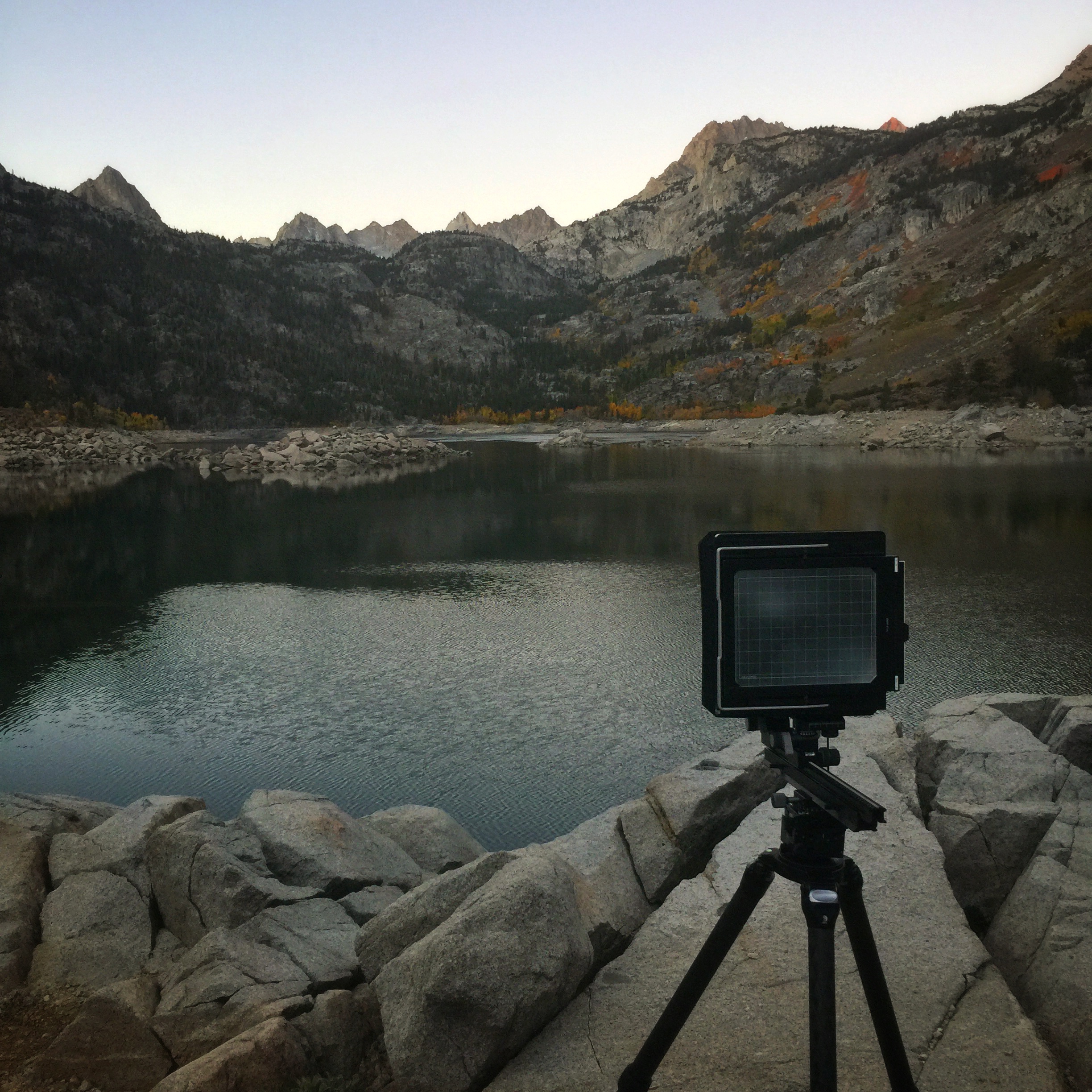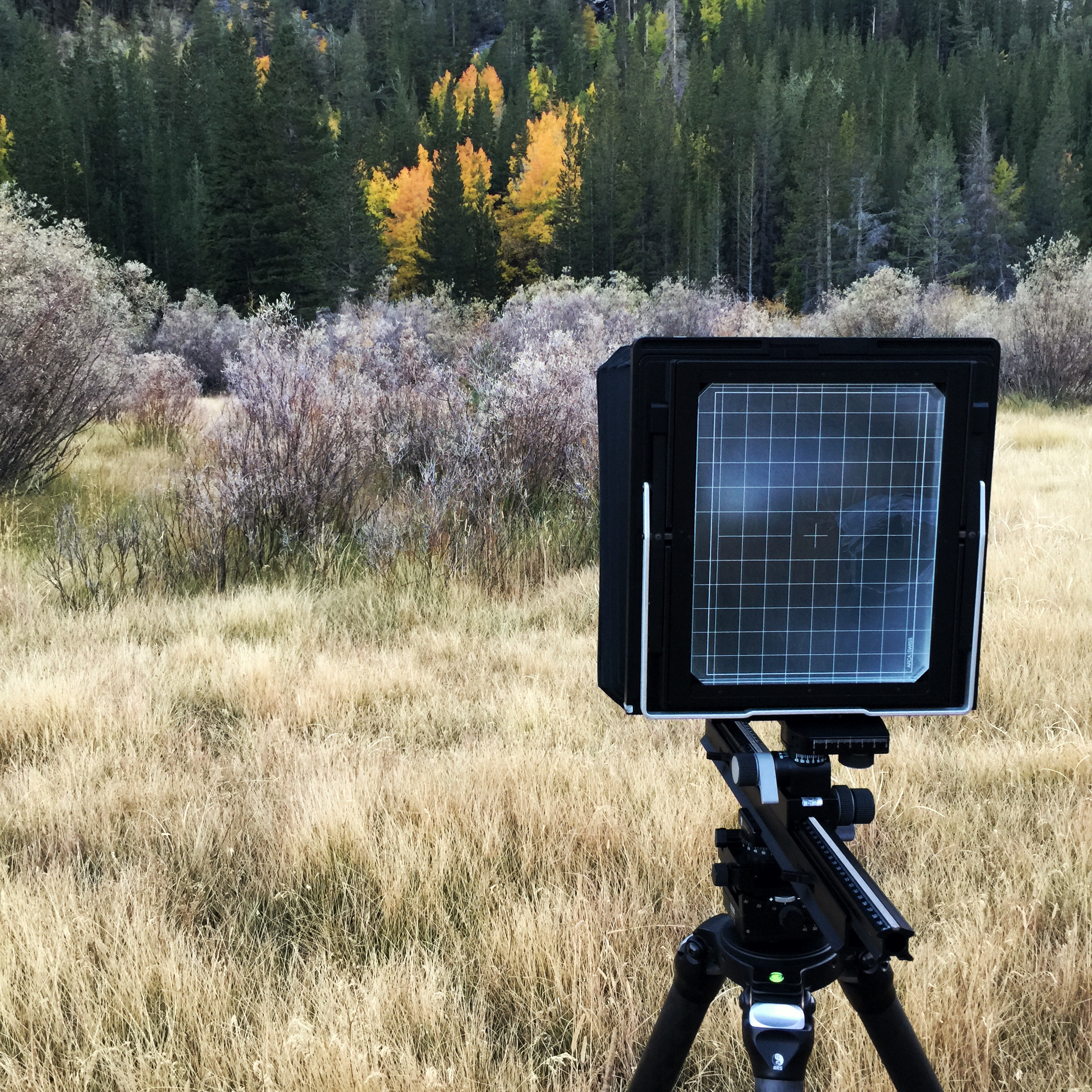Charlie had a blast on the trip. He had the chance to approve a couple exposures, meet some tourists, romp around in the wilderness, and even got to drive a little bit - his four favorite activities. The 8x10 got some good use on this past trip, and not including my evening through Yosemite on the way home (post to come later) I ended up shooting 3 sheets of film. Two of these were the aspen scene from above and the the third was from the scene below.
The aspen scene above, I've entitled "Autumn's Grasp." I spotted the scene earlier in the afternoon on the day we arrived to the area and knew I needed the perfect low contrast light to photograph it. I set up well before sunset and waited for the calm twilight to come. As the sun sank well below the mountains behind me, the warmth of the sky above reflected a gorgeous light onto the grasses and aspens. I have been forcing myself to see more "intimate landscapes." These scenes are quite difficult to compose and photograph, but I find that as an artist, I strive to search for these compositions. They can be incredibly unique and have so much to say if you let yourself into the image. I composed this photograph intentionally symmetrical. I loved how the textures and colors stacked into perfect thirds, the brown grasses, the almost purple brush, and the pine trees, with that pop of fall color directly in the center. Something new from me, that's for sure.
The white granite in the Sierra Nevadas is an absolute dream to photograph. Because of its silvery / white color, the stone reflects nearly every quality of light, especially during the twilight hours. In the photograph below, the calm twilight of sunrise sometimes known as "the blue hour" was reflected by the bright white granite foreground. Typically, I don't photograph many scenes with clear skies. Clouds add texture and interest to usually otherwise dull photograph, but this particular scene worked quite well with clear skies. With the small pops of fall color in the distance, you can almost feel the peaceful, crisp autumn morning when looking at this photograph.






















